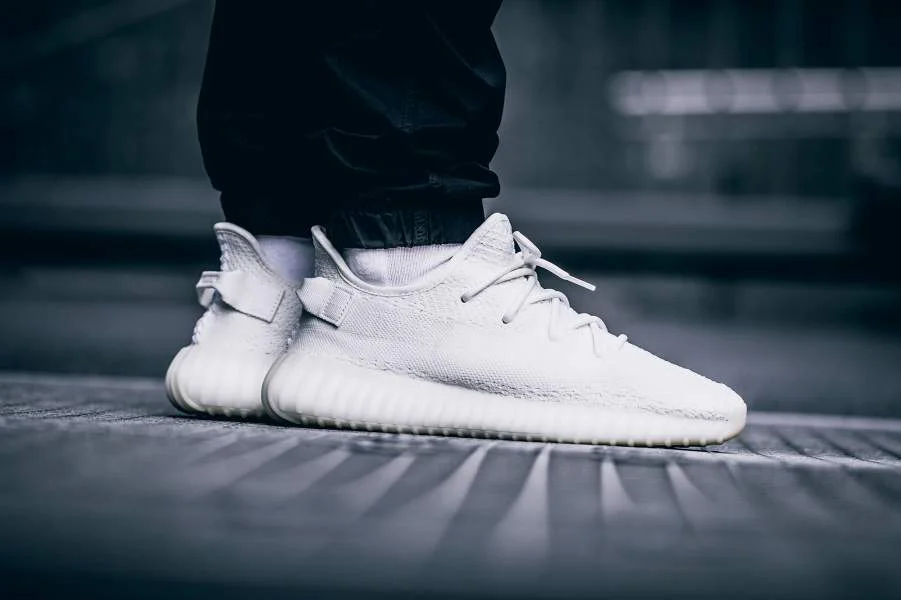Kanye West’s Yeezy Strategy: How to Create a $1.5 Bln Brand
By Emily McCullough and Tricia McKinnon
In the intro to a 2003 song, Jay-Z gave Kanye West the nickname “Kanyeezy” and six years later, the Nike Air Yeezy sneaker was born. From a young age, Kanye West enjoyed sketching sneaker designs and his first design was of the Jordan One. After receiving fame as a rapper, West was able to return to his first love of designing sneakers in 2007. That year he designed and created a sneaker for Japanese apparel company A Bathing Ape. That set the stage for what would become a partnership on a much large scale with Nike. West launched the first ever Air Yeezy sneaker with Nike in 2009.
But by 2013, West was unhappy with his partnership. He felt that he couldn’t grow his sneaker business the way he wanted to with Nike. Speaking about the Air Yeezy, West said: “it was the first shoe to have the same level of impact as an Air Jordan, and I wanted to do more.” Another issue with the deal with Nike was that Nike does not provide celebrities with royalties on their shoes. As a result West decided to take his business to Adidas. In his new deal with Adidas, he was able to negotiate an unheard-of deal: a 15% royalty on wholesale and a marketing fee. It is estimated that Michael Jordan’s deal involves a 5% royalty.
West’s line with Adidas has been a hit and is expected to generate more than $1.5 billion in 2019.
But how did West do this?
One of West’s talents is his ability to capitalize on scarcity to drive sales. When West launched the Yeezy Boost 350 with Adidas he did so with a limited release drop. It is estimated that for many of West’s limited release drops only tens of thousands of shoes are available for sale which then sell out almost immediately. Author Robert Cialdini has written extensively about the scarcity principle. His teachings can be boiled down to the simple fact that: “people want more of those things they can have less of”. West has certainly shown the potential of this principle to drive sales and create a cult following.
Even Adidas CEO Kasper Rørsted confirmed what is the brand’s secret sauce when he said: “as we’re moving new Yeezy products into the market, we will do what we’ve done also in the past: create scarcity around the new products we are launching, make sure we have the hype, and, over a given period of time of course, drive volume into that market.”
The resale sneaker market also fuels demand of limited-edition merchandise. Since Yeezys are sold in such limited quantities if you really want a pair you can try to purchase them in the after market online through platforms like StockX. This often drives the cost of a pair of Yeezys to thousands of dollars depending on the style which then further drives the exclusivity and cachet of the brand. While in hindsight it is easy to see why capitalizing on scarcity is a winning strategy but it is not for the faint of heart. As a retailer you have to forgo potentially millions of dollars in sales in the beginning as you build up hype for your brand. Then at some point in the future, which is unknown, those actions can translate into a bigger following and more sales. For example, last year the white Yeezy Boost 350 v2 sneaker was re-released in what was called “the largest drop ever”, an estimated million pairs. The brand value may drop as the shoes saturate the market but likely not before West and Adidas cash out.
Do you like this content? If you do subscribe to our retail trends newsletter to get the latest retail insights & trends delivered to your inbox
And it is also important to give West credit for his talent in design. Speaking about Yeezys, Daishin Sugano, Co-founder and CPO of sneaker app Goat has said: “this a lifestyle shoe. It’s hitting at a point in time where people are super mobile and need to wear a shoe that’s comfortable and also looks good.”
Sources
https://qz.com/quartzy/1406299/kanyes-yeezy-sneaker-line-may-lose-its-luster-without-its-scarcity/
https://qz.com/quartzy/1406299/kanyes-yeezy-sneaker-line-may-lose-its-luster-without-its-scarcity/
https://www.nydailynews.com/entertainment/music/kanye-west-yeezy-shoes-worth-penny-article-1.3108687
https://www.businessinsider.com/how-kanye-west-made-yeezy-brand-a-success-2018-4
You may also like:
The Brilliant Strategy Behind Supreme’s Success
15 Facts You Need to Know About StockX the Billion Dollar Resale Platform
Nike’s Growth & Marketing Strategy: How it Grew Into an Icon
eCommerce and its Profitability Issue. Why its So Hard to Make Money
The Benefits & Cons of Selling on Amazon, 10 Factors to Consider

